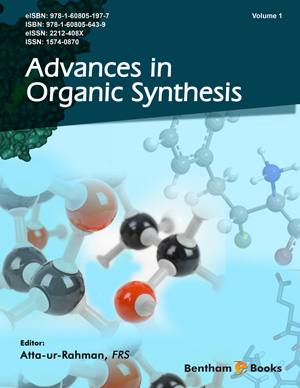Abstract
Activation of CO2
is the first step towards its reduction to more useful
chemicals. Electrochemical CO2
reduction reactions can lead to high value-added
chemical and materials production while helping decrease anthropogenic CO2
emissions. In studies, it was found that copper metal clusters can reduce CO2
to more
than thirty different hydrocarbons and oxygenates, yet they lack the required
selectivity. Density functional theory (DFT)-based studies are carried out on copper
clusters, doped clusters, nano-structures and Cu-based alloy catalysts to assess the
activity and selectivity of CO2
reduction to generate carbon monoxide (CO), formic
acid (HCOOH), formaldehyde (H2C=O), methanol (CH3OH) and methane (CH4
). In
this chapter, we will discuss the effect of the adsorption of CO2
on (Sc, Ti, V) metaldoped clusters. DFT studies carried out for these clusters showed a high CO2
adsorption energy, a low activation barrier for its dissociation, and a facile regeneration
of the clusters. The reaction energies (dopant-dependent), the mechanisms for reaction,
dissociation barriers for CO2, and less desorption energies (dopant dependent) for
carbon monoxide (CO) during the activation of CO2
with Cu3X clusters (X= first row
transition metals) are discussed in the chapter. C6Li6
is not capable of capturing CO2
molecules but is effective in their storage. The interaction of CO2with superalkalis such
as FLi2
, OLi3
, and NLi4
and non-metallic superalkalis such as F2H3
, O2H5, and N2H7
is
also included due to its applications.
Keywords: Adsorption, Catalysts, Copper clusters, Materials, Regeneration.






















